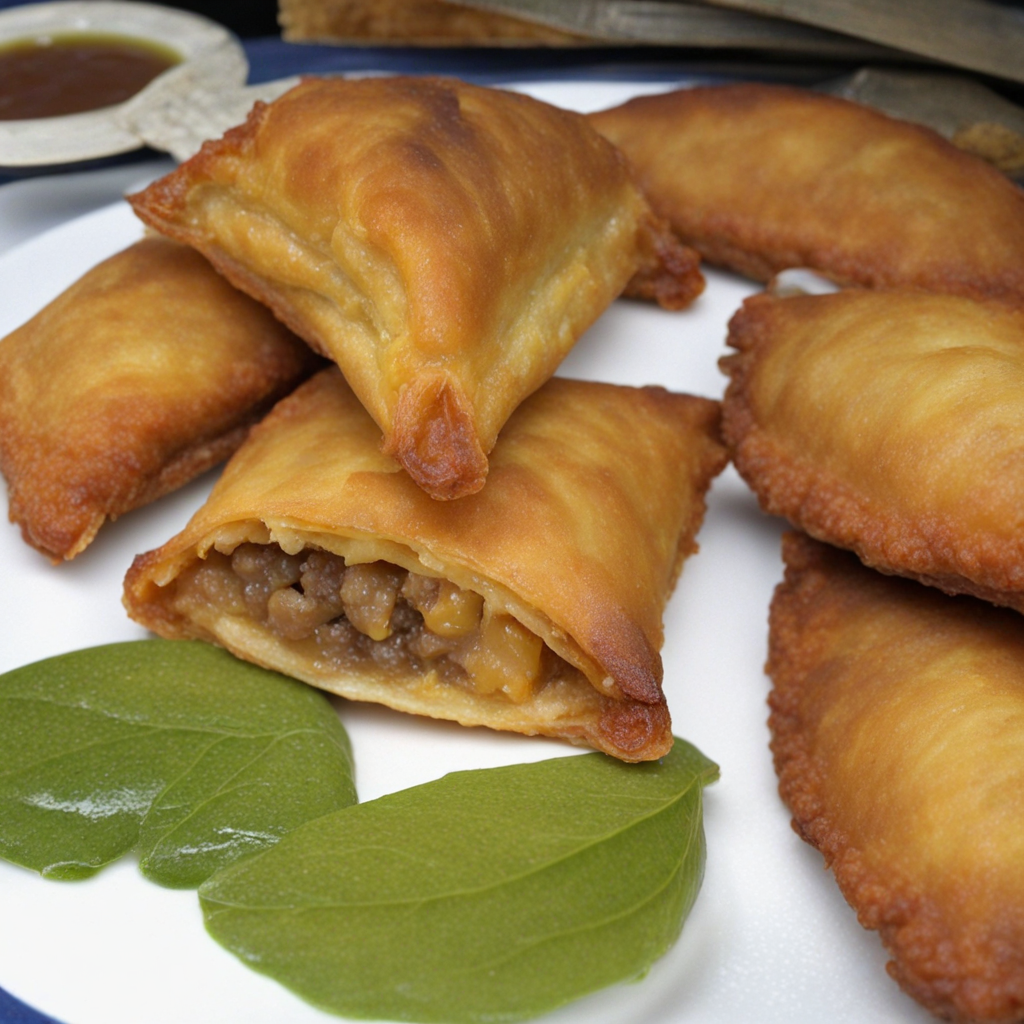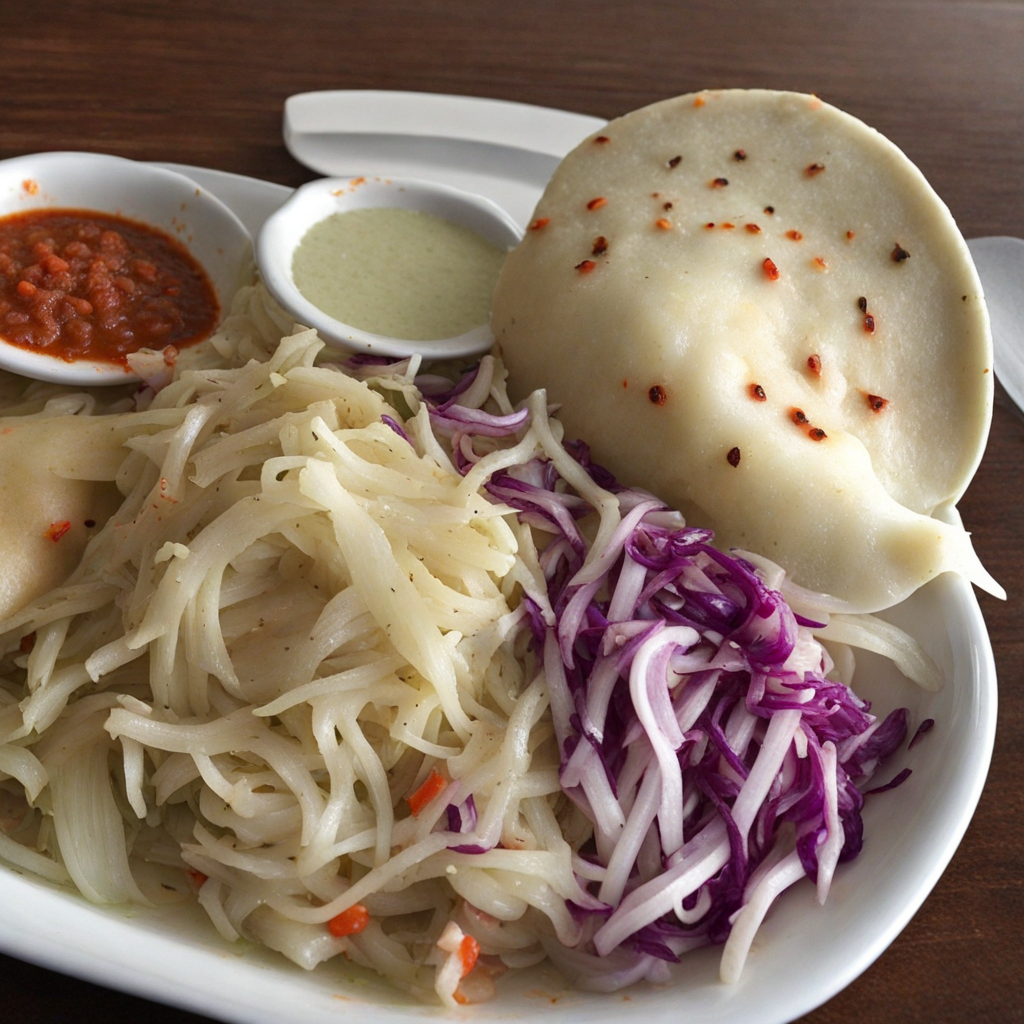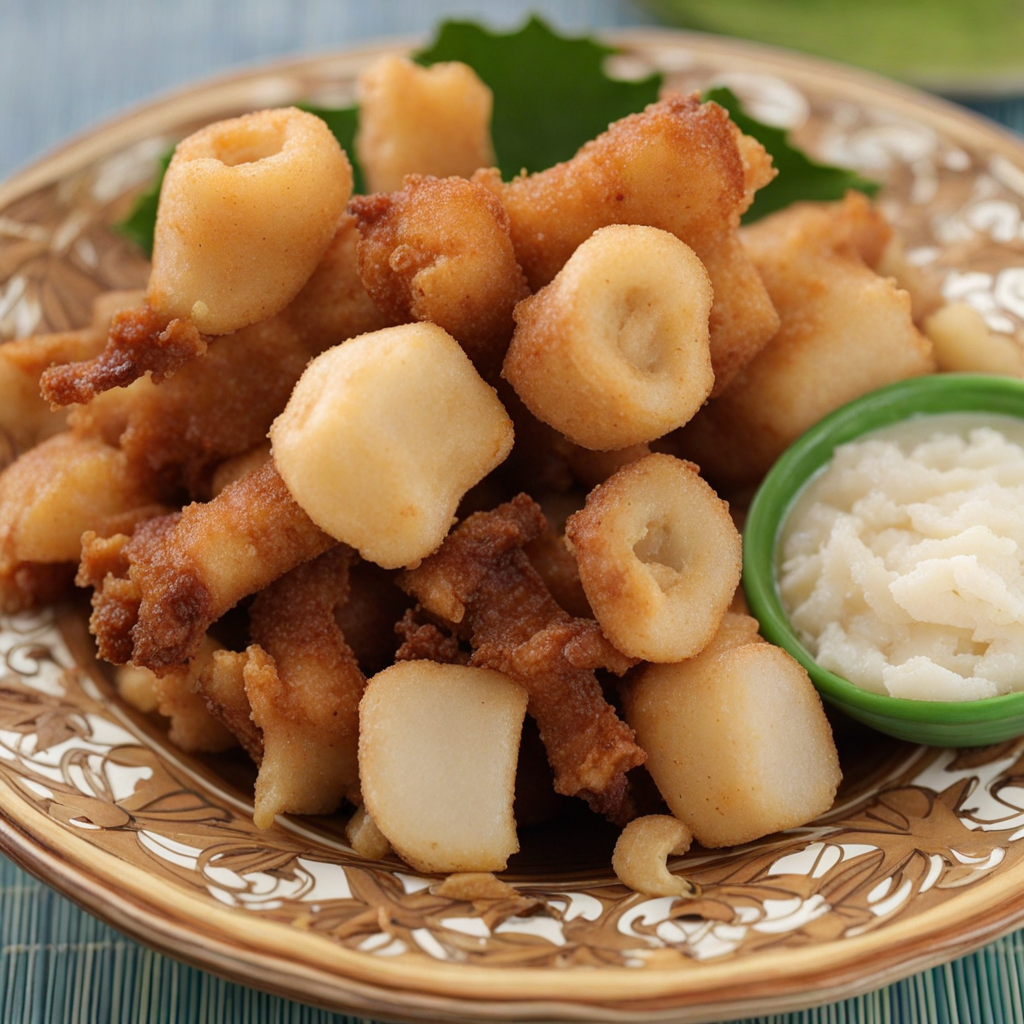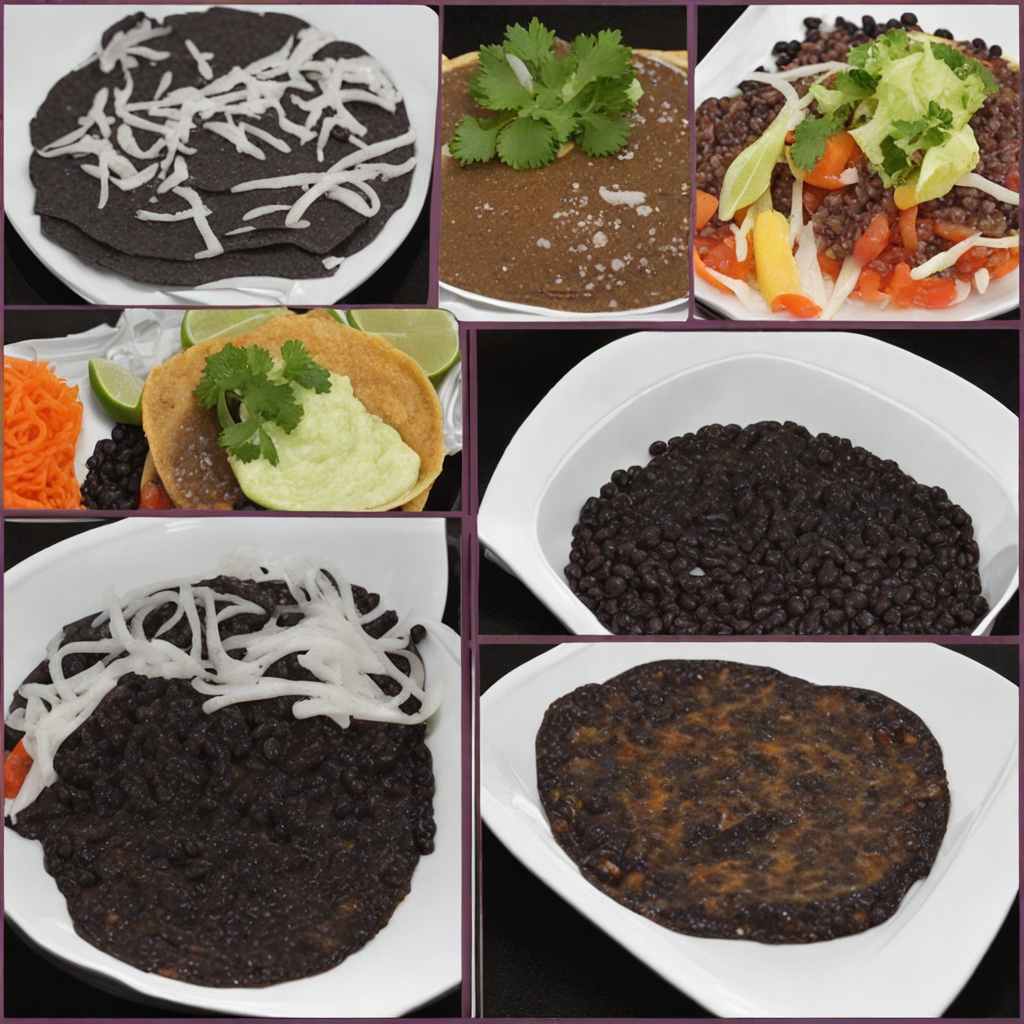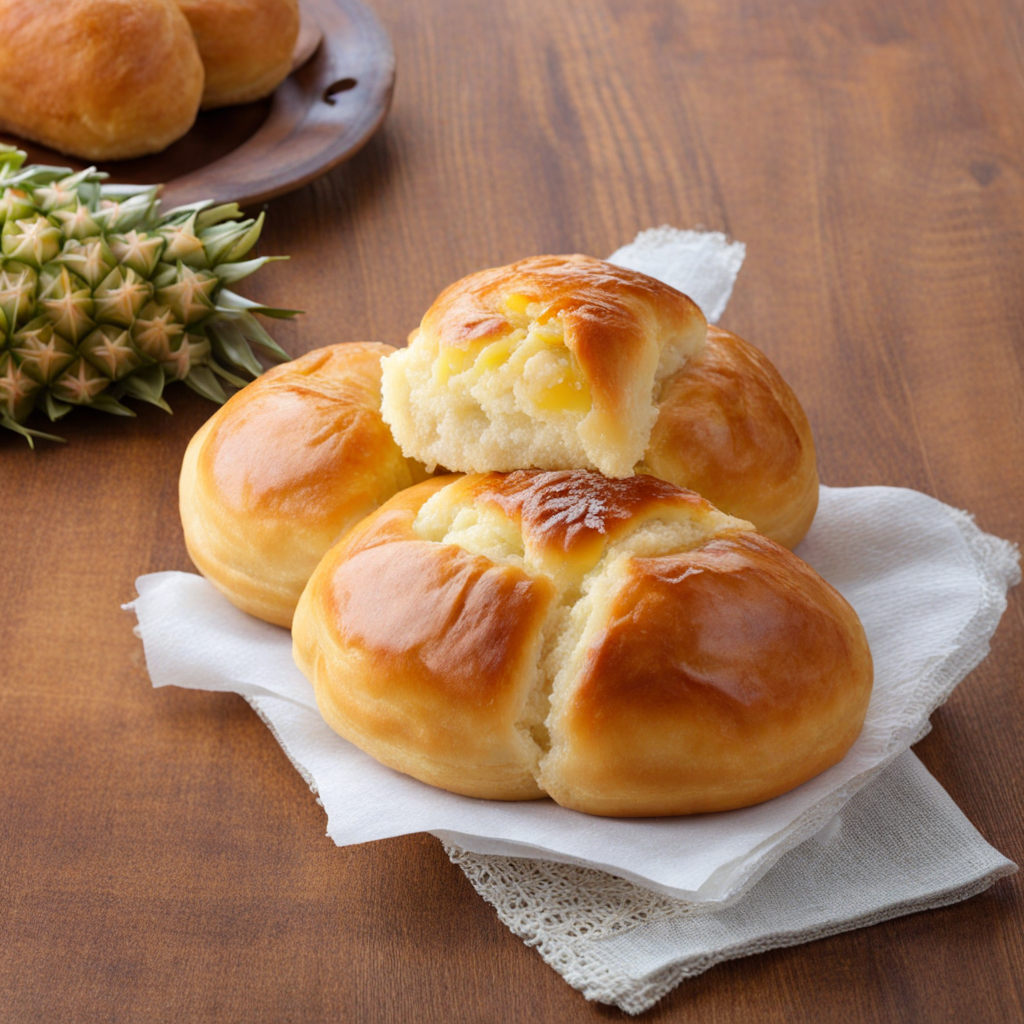Pasteles
Pasteles are a delightful and savory treat hailing from El Salvador, often enjoyed as a snack or light meal. These delicious pastries are typically made from a dough that combines corn masa, which gives them a unique texture and flavor. The masa is often mixed with spices and sometimes a bit of cheese, creating a rich base that perfectly complements the fillings. The dough is then shaped into small discs, filled with a variety of ingredients, and folded over before being fried to golden perfection. Each bite reveals a satisfying crunch, giving way to the flavorful stuffing inside. Common fillings for pasteles include a mix of seasoned meats such as chicken or beef, often combined with potatoes, bell peppers, and various spices. Vegetarian options can feature a medley of beans, cheese, and vegetables, making them versatile for different dietary preferences. The balance of flavors in each pastel is enhanced by the spices, offering a taste that is both comforting and exotic. The use of fresh ingredients, combined with traditional recipes passed down through generations, ensures that every pastel is a taste of Salvadoran culture. Pasteles are often served with a side of salsa or a tangy dipping sauce, adding an extra layer of flavor and a hint of heat. They can be found in street food stalls, local markets, and restaurants across El Salvador, making them a popular choice for both locals and visitors. Enjoying pasteles is not just about the food; it's an experience that invites you to savor the rich culinary heritage of El Salvador, one crispy, flavorful bite at a time.
How It Became This Dish
The Rich History of Pasteles in El Salvador Pasteles, a beloved dish in El Salvador, are more than just a culinary treat; they are a reflection of the country’s history, culture, and the fusion of different culinary traditions. These savory pastries, often filled with meat and vegetables and wrapped in a banana leaf, have roots that intertwine with the indigenous heritage and the influences brought by colonial powers. Origins The origins of pasteles can be traced back to the indigenous peoples of Mesoamerica. Before the arrival of the Spanish in the 16th century, the native populations had already developed a rich agricultural system, cultivating corn, beans, and squash—staples that would form the foundation of Salvadoran cuisine. The use of masa (corn dough) is a significant aspect of many traditional Salvadoran dishes, and pasteles are no exception. The word "pastel" itself comes from the Spanish term for "cake" or "pastry," but the Salvadoran pastel is distinct from its European counterparts. The introduction of wheat flour by the Spanish colonizers brought new possibilities for baking and pastry-making, but the blending of old and new ingredients led to a uniquely Salvadoran interpretation of the pastry. Cultural Significance Pasteles hold a special place in the hearts and homes of Salvadorans. They are often associated with celebrations, family gatherings, and traditional holidays. The preparation of pasteles is frequently a communal activity, with family members coming together to make large batches for special occasions. This practice not only strengthens familial bonds but also passes down culinary knowledge from one generation to the next. In Salvadoran culture, food is a vital aspect of social identity, and pasteles symbolize unity and tradition. During festive seasons such as Christmas and Holy Week, pasteles are often part of the celebratory feasts. They are also a common offering during important life events, such as weddings and birthdays, showcasing their importance in Salvadoran culture. Development Over Time The evolution of pasteles reflects the broader changes in Salvadoran society. Initially, pasteles were made with simple ingredients: masa, filled with whatever protein and vegetables were available. As the country evolved, so too did the fillings and the techniques used in making pasteles. Traditional fillings often include shredded chicken, pork, or beef, mixed with spices, potatoes, carrots, and even olives, offering a rich flavor profile that is both comforting and satisfying. The cooking method for pasteles has also seen changes over the years. Traditionally, they were steamed or boiled, wrapped in banana leaves, which impart a unique flavor and aroma to the pastry. However, with modernization and the influence of different cuisines, variations of pasteles have emerged, including baked versions that showcase the versatility of this dish. Moreover, the migration of Salvadorans to the United States and other countries has led to the globalization of pasteles. As Salvadorans settled abroad, they brought their culinary traditions with them, introducing pasteles to new audiences. This cross-cultural exchange has resulted in adaptations of the dish, as Salvadoran immigrants blend their traditional recipes with local ingredients, creating a fusion of flavors that retains the essence of pasteles while appealing to diverse palates. Regional Variations While pasteles are commonly associated with El Salvador, similar pastries can be found throughout Latin America and the Caribbean, each with its own regional twist. For instance, in Mexico, "tamales" are similar in that they are made with masa and filled with various ingredients, while in Puerto Rico, "pastellón" refers to a layered dish made with plantains. In El Salvador, the specific style of pasteles can vary by region, influenced by local ingredients and culinary practices. Coastal regions may feature seafood fillings, while mountainous areas may rely more on hearty, land-based proteins. The variations reflect the rich biodiversity of El Salvador, where different regions contribute unique flavors and ingredients. Contemporary Revival In recent years, there has been a resurgence of interest in traditional Salvadoran cuisine, including pasteles. Chefs and home cooks alike have begun to explore and celebrate their culinary heritage, often incorporating modern techniques and presentations while honoring the traditional recipes passed down through generations. Food festivals and cultural events showcase pasteles, allowing Salvadorans to reconnect with their history and share their food with a broader audience. Social media has also played a role in the revival of pasteles. Platforms like Instagram and TikTok have become spaces where Salvadorans can showcase their cooking, share recipes, and promote the cultural significance of their cuisine to a global audience. This digital renaissance has allowed pasteles to transcend geographical boundaries, inspiring chefs around the world to experiment with this traditional dish. Conclusion Pasteles are indeed more than just a popular Salvadoran food; they are a profound expression of the nation’s history, culture, and communal spirit. From their indigenous roots to their evolution through colonial influences and modern adaptations, pasteles encapsulate the journey of El Salvador and its people. They represent resilience, tradition, and the joy of sharing food with loved ones. As El Salvador continues to navigate the complexities of globalization and cultural identity, pasteles remain a steadfast symbol of heritage, bringing together families and communities. Whether enjoyed at a festive gathering or as a comforting everyday meal, pasteles are a delicious reminder of the rich history and vibrant culture of El Salvador.
You may like
Discover local flavors from El Salvador


